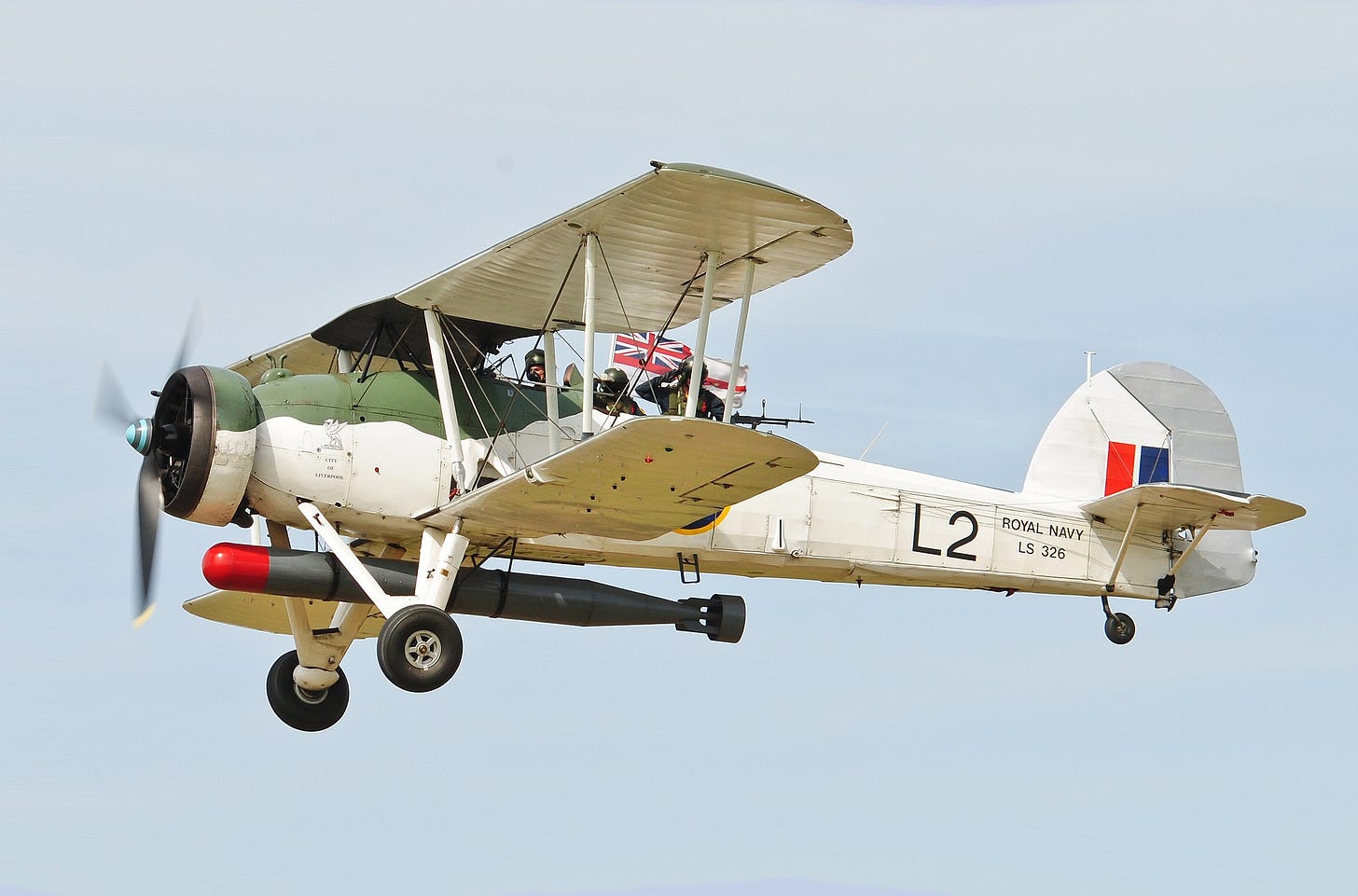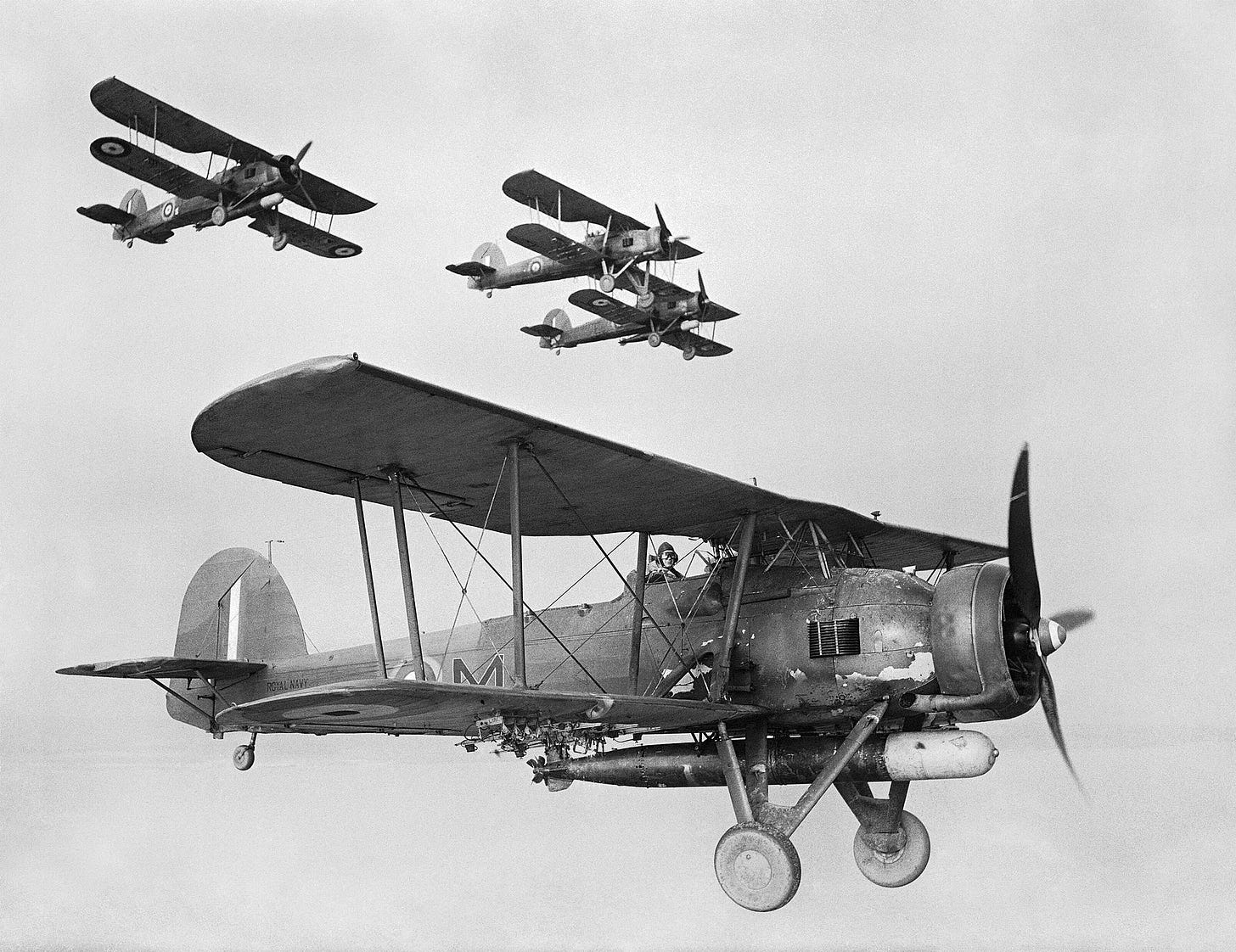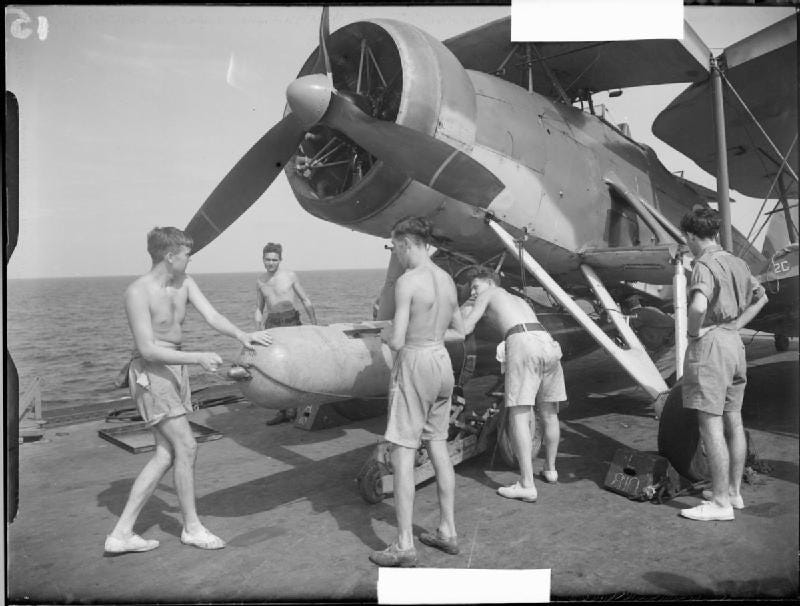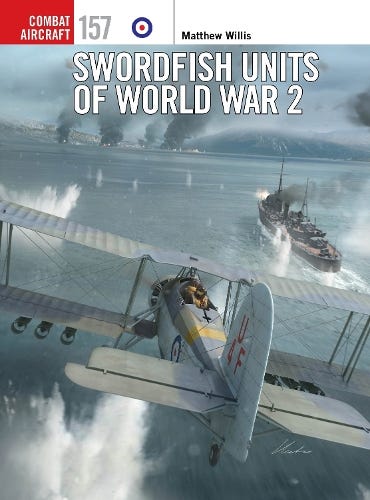British author Matthew Willis cares deeply about the subject of Fleet Air Arm aircraft; who else could get genuinely angry at criticism of the Blackburn Firebrand? Indeed, defending the Blackburn company, generally written off in aviation history circles as the worst British aircraft company, is a recurring theme in Willis’ work (he has also endeavoured to save the reputation of the unfairly maligned Allison Spitfire). Though often a defender of the underdog, in this new book for Osprey Swordfish Units of World War 2, he returns to the Swordfish, an aircraft, which despite being slow and seemingly outdated, became perhaps the most cost effective warplane in history and is widely respected for its part in destroying German ships, including the Bismarck, in the Second World War.
It is impossible to argue against the importance and success of the Fairey Swordfish. Regardless of the many controversial in-house designs by Blackburn, the Swordfish is perhaps the best reason to respect Blackburn. Blackburn built approximately 71% of all Swordfish.
Out of the total 2,391 Swordfish produced, Blackburn constructed 1,699, while Fairey built the remaining 692 (though this defence of Blackburn may well see Willis heading to my house to sort me out with a pipe wrench). The book is excellent and packs a hell of a lot into 96 pages (readers over forty may require extra-strong reading glasses for the print size).
The illustrations (by Janusz Światloń and Gareth Hector) are magnificent. This is an exciting and worthy book about an aircraft that repeatedly punched above its weight in the most spectacular fashion, and an excellent addition to the impressive, comprehensive Osprey range.
Buy it here.







